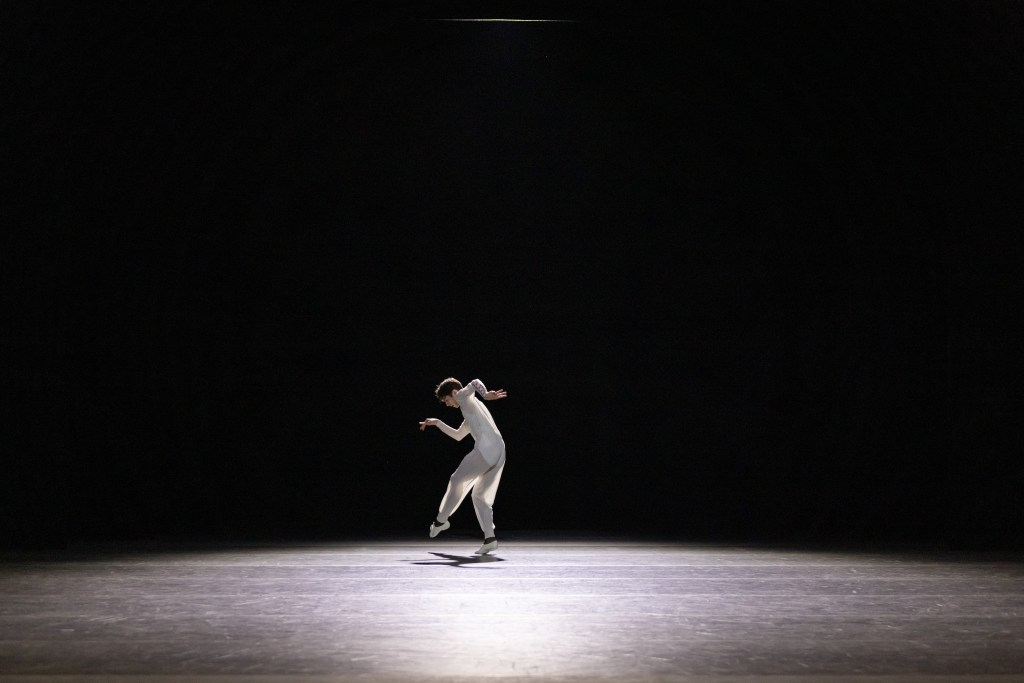Sydney Opera House, April 6 and 21, 2021
The Australian Ballet returned to the stage in February with Summertime at the Ballet – a Melbourne-only gala celebration after last year’s disappointments. New York Dialects was something else entirely; a manifesto really. This was new artistic director David Hallberg saying this is me and this is where I want to take you.
So where were we going? To an unaccustomed level of brilliance right through the company’s ranks if the two Balanchines were any guide. On opening night (April 6) Serenade was beyond luscious and The Four Temperaments – such a bracing work – was dispatched with cool sophistication.
But first to Pam Tanowitz’s Watermark, which fittingly sat between the two Balanchines and not only because it’s central to Hallberg’s view of what ballet audiences need. On a deeper level Watermark knitted the program together. The three works vibrated as one with Watermark as the conduit.

It was something of a coup to have Tanowitz here as the American contemporary choreographer rockets up international ballet companies’ wish-lists, a situation made possible by the fact she and Hallberg go back a long way. He commissioned her to make a work for American Ballet Theatre’s Incubator new choreography program when he was its director and she made a dance film with him last year that was one of his very last performances. They have been friends for more than a decade, which is how Hallberg was able to get into her calendar for his very first commission at TAB.
Watermark is named after its phenomenal score, written by lauded young American composer Caroline Shaw in 2019 and expanded for Tanowitz’s 30-minute ballet (let’s call it a ballet; it was made for a ballet company). Shaw’s music dances with Beethoven’s third piano concerto, sometimes quoting directly but excitingly taking its own path. This duality of a living composer communing with a giant of the past is a quality also embedded in Tanowitz’s dance, albeit more glancingly. (Watermark is such a beautiful and apt title, evoking the idea and the delicacy of something overlaid on something else but visible only when held to the light.)
Watermark is conceived on a grand scale for 18 dancers, mostly men (and mostly from the coryphée and corps ranks). The gender ratio roughly reverses that in Serenade, with its indelible opening of 17 women standing with one arm upstretched to the heavens. Watermark alludes to that gesture of wonder and mystery, as it does to some shapes from The Four Temperaments and the wider ballet canon.

Unusually, the stage of the Joan Sutherland Theatre at the Sydney Opera House was opened to the back. It created a deep space, gorgeously lit by Jon Buswell, where groups or individuals danced, stood, sat or reclined. To the front there were flurries of hopping, skittering, scattering activity, fast and precise or quietly contemplative. Clusters formed and dissolved, people came and went, simply dressed in white by Harriet Jung and Reid Bartelme.
This is a plotless work but questions arose nonetheless. Who are these people? What are they thinking? Where are they going? Can I join in, particularly in that brief circle dance up the back? Who is that divine young man given an achingly lovely solo? (That would be Adam Elmes, one of the most junior members of the company.)
It was a joy to see how Tanowitz’s contemporary sensibility meshed with the classical vocabulary, particularly in the razor-sharp footwork, buoyant vertical jumps and sideways jetés that suddenly morphed into something unexpected, eccentric even. Tanowitz’s impulses could be thought austere, given the pristine quality of each movement, but that movement looked rich and juicy on the dancers. A beautiful conundrum, as was the fact that a work this big felt so intimate.

The gifts were not given up lightly and Watermark, with its huge amount of detail and multiple focus points, could be seen many times. Heard again too, because there was so much from Shaw to absorb, as there was in Tchaikovsky (Serenade) and Hindemith (The Four Temperaments). The Opera Australia Orchestra and Nicolette Fraillon had a great opening night as did solo pianists Stefan Cassomenos and Duncan Salton. Simon Thew conducted the performance I saw on April 21, with Cassomenos the soloist in both Watermark and The Four Temperaments.
One could have forgiven TAB for not looking entirely match fit given – the brief gala season apart – its long absence from the stage. No indulgence was needed. There were standout performances wherever one looked, none more gratifying than that of soloist Nathan Brook (a stunning Phlegmatic, The Four Temperaments, April 21). In an announcement made on opening night, Brook won both prizes in the 2020 Telstra Ballet Dancer Awards – the Rising Star and People’s Choice awards. The voters clearly got it right.
The Sydney season of New York Dialects ends April 24. Melbourne, June 3-12.